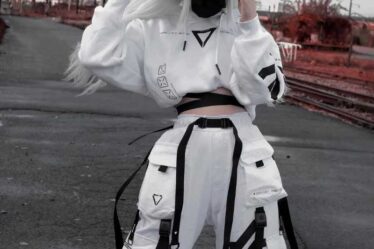In the constantly evolving landscape of modern fashion, the streetwear aesthetic emerges as a bold statement of rebellion against traditional sartorial norms.
Streetwear fashion, once confined to the underground scenes of skate and hip-hop (thanks to Tony Hawk and everyone on the Pro Skater soundtrack), has catapulted to the forefront of contemporary culture, offering a fresh perspective on what it means to dress with intention and attitude.
The streetwear aesthetic is replacing the “business” with “track” in suits. This exploration delves into the heart of streetwear style, revealing how it has transformed from a niche interest into a global fashion powerhouse driven by creativity, collaboration, and a relentless pursuit of the new.
Read on to navigate the dynamic world of the streetwear aesthetic, uncovering the trends, designs, and movements that continue to shape its ever-changing landscape.
What Is Streetwear?
Streetwear is an eclectic, urban-inspired fashion genre that merges comfort, functionality, and style. It’s characterized by casual yet distinctively bold and trendy pieces such as graphic tees, hoodies, sneakers, and oversized garments. It’s a style that you can really make your own.
Originating in the late 1970s and early 1980s, streetwear was heavily influenced by the skate and surf cultures of California (hello, Lords of Dogtown), and elements of hip-hop fashion in New York.
Today, you can find streetwear anywhere, from DIY aesthetics to luxury collaborations, making it as versatile as it is an enduring element of men’s fashion.
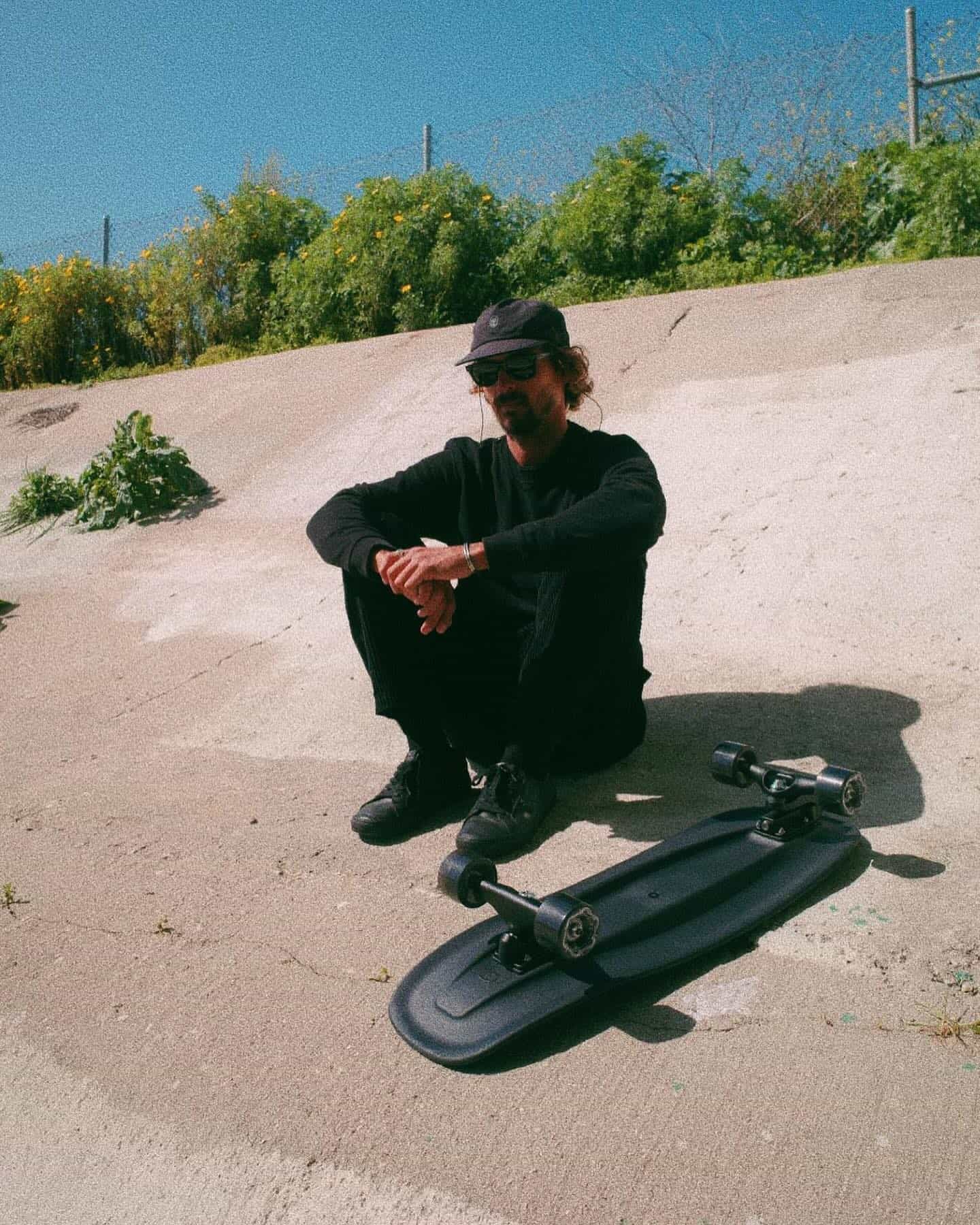
The Evolution of the Streetwear Aesthetic
The Origins of Streetwear in Skate and Surf Cultures
The genesis of streetwear is firmly rooted in the skate and surf cultures of 1970s California. Brands like Stüssy, born from the surf scene, began crafting unique apparel that resonated with the laid-back, rebellious spirit of the communities.
These early pioneers sold screen-printed T-shirts and hoodies directly from their cars; it doesn’t get more “grassroots beginnings and DIY ethos” than that. This era laid the foundation for streetwear’s emphasis on community, identity, and exclusivity. It was a real IYKYK situation.
Hip-Hop’s Influence in Streetwear
As streetwear migrated from the West Coast across the country, it found a new voice within the effortlessly cool hip-hop scene of the 1980s. This period saw streetwear adopting the oversized fits, bold logos, and statement sneakers that hip-hop artists and their followers embraced.
Brands like Tommy Hilfiger and Ralph Lauren, initially outside the streetwear sphere, were co-opted by hip-hop icons, weaving streetwear into the fabric of music culture. This really isn’t your grandpa’s Tommy hoodie.
The Rise of Sneaker Culture
Integral to streetwear’s identity is the sneaker culture that exploded in popularity during the 1980s and 1990s. This era was marked by groundbreaking collaborations, such as
Sneakerheads, you know! Sneakers transitioned from functional athletic wear to symbols of status, style, and community affiliation. They became the sole of streetwear aesthetic. Sorry, I had to.
Luxury Meets Streetwear
Hello, new millennium! The 2000s witnessed a transformative collaboration between the worlds of luxury fashion and streetwear, challenging the traditional boundaries of high fashion.
The partnership between Louis Vuitton and Supreme in 2017 was a watershed moment, symbolizing the official acceptance of streetwear within the luxury fashion sphere.
This fusion brought streetwear’s irreverent aesthetics and subcultural authenticity into the realms of haute couture, elevating the streetwear brand to unprecedented levels of prestige and influence. Great for the style, but selfishly, not so much for the price tags.
Digital Revolution and Global Expansion
The advent of social media and e-commerce has propelled streetwear from niche subcultures to global prominence. Brands leveraged digital platforms to drop limited-edition releases, creating a frenzy of online hype and fostering a global community of streetwear enthusiasts.
This digital expansion democratized streetwear, allowing it to infiltrate diverse cultures and scenes, from Tokyo’s Harajuku district to the fashion capitals of Europe, further diversifying its influences and aesthetics.
Streetwear Today: A Cultural Synthesis
Today, streetwear represents a synthesis of its rich history, incorporating elements from its skate and surf origins, hip-hop influence, sneaker culture, and luxury collaborations. It is a global phenomenon that transcends fashion, embodying attitudes, lifestyles, and a means of expression for a diverse, interconnected generation.
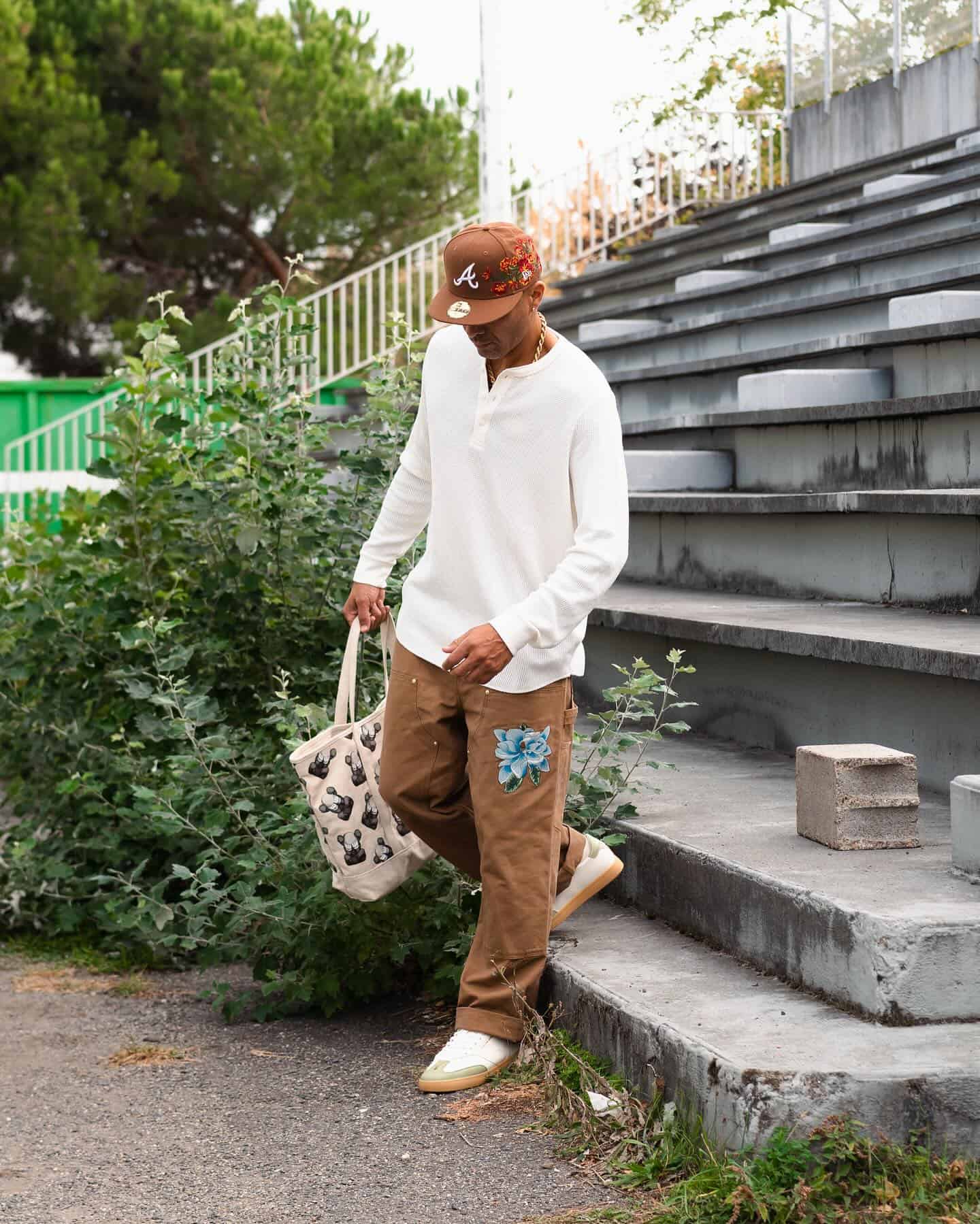
Key Components of Streetwear Style for Men
Sneakers: The Foundation
In the streetwear world, the sneaker is more than just footwear; it’s a statement of identity, culture, and personal style. Iconic models like the Air Jordan, Adidas Superstar, and Converse Chuck Taylor have transcended their athletic origins to become staples of street fashion.
Limited editions and collaborations between sneaker brands and established artists or designers have further elevated sneakers into highly sought-after collectibles, embodying the streetwear ethos of uniqueness and exclusivity. I’m still saving up for my pair of Converse X Comme Des Garçons kicks.
Graphic Tees: The Canvas
This is where the DIY aspect really shines. Graphic tees serve as a canvas for expression within the streetwear aesthetic, featuring bold graphics, provocative slogans, and intricate designs that communicate the wearer’s affiliations, interests, and identity.
Brands such as Supreme, Off-White, and A Bathing Ape have mastered the art of the graphic tee, transforming simple cotton shirts into coveted pieces of wearable art.
Streetwear Pants: A Versatile Vibe
In the realm of streetwear, pants play a pivotal role in defining the aesthetic and functionality of an outfit. Cargo pants were first worn by the British Armed Forces in 1938 and came across the pond in the 40s. Cargo pants are prized for their practicality and rugged style, with brands like Carhartt and Alpha Industries refining their fit and fabric.
Denim jeans remain a cornerstone of streetwear aesthetic, with relaxed and distressed styles offering endless versatility. Joggers introduce a comfort-focused alternative, their tapered fit and elastic cuffs perfect for highlighting sneakers; track pants bring a retro sporty vibe.
Each type, from cargos to joggers, embodies streetwear’s fusion of comfort, utility, and style, making them essential components of the streetwear wardrobe.
Hoodies and Sweatshirts: Comfort Meets Style
Originally worn by warehouse workers in NYC, the hoodie symbolizes the perfect marriage between comfort and fashion in streetwear. Although it gained popularity in the athletic realm, it has been adopted by streetwear enthusiasts for its versatility, ease, and laid-back vibe.
High-end streetwear brands have reimagined the hoodie with premium materials, unique prints, and oversized fits, making it a central piece in the streetwear wardrobe.
Outerwear: The Statement Pieces
Streetwear outerwear—ranging from bomber jackets to tactical vests—embodies the practical yet fashionable essence of the style. Brands like Stone Island and The North Face have introduced innovative designs and technologies into their outerwear, making these pieces not only stylish but also functional in various environments.
Outerwear in streetwear often features bold logos, utility pockets, and versatile materials, showcasing the blend of form and function that streetwear espouses.
Accessories: The Final Touch
In the streetwear aesthetic, accessories are not afterthoughts but essential elements that complete a look. Caps, bucket hats, and beanies from brands like Palace and Supreme add a finishing touch to outfits, while designer collaborations bring luxury to everyday items like belts and the now ubiquitous crossbody bags.
Jewelry, too, plays a role, with chains, rings, and bracelets adding a personal touch to the streetwear aesthetic.
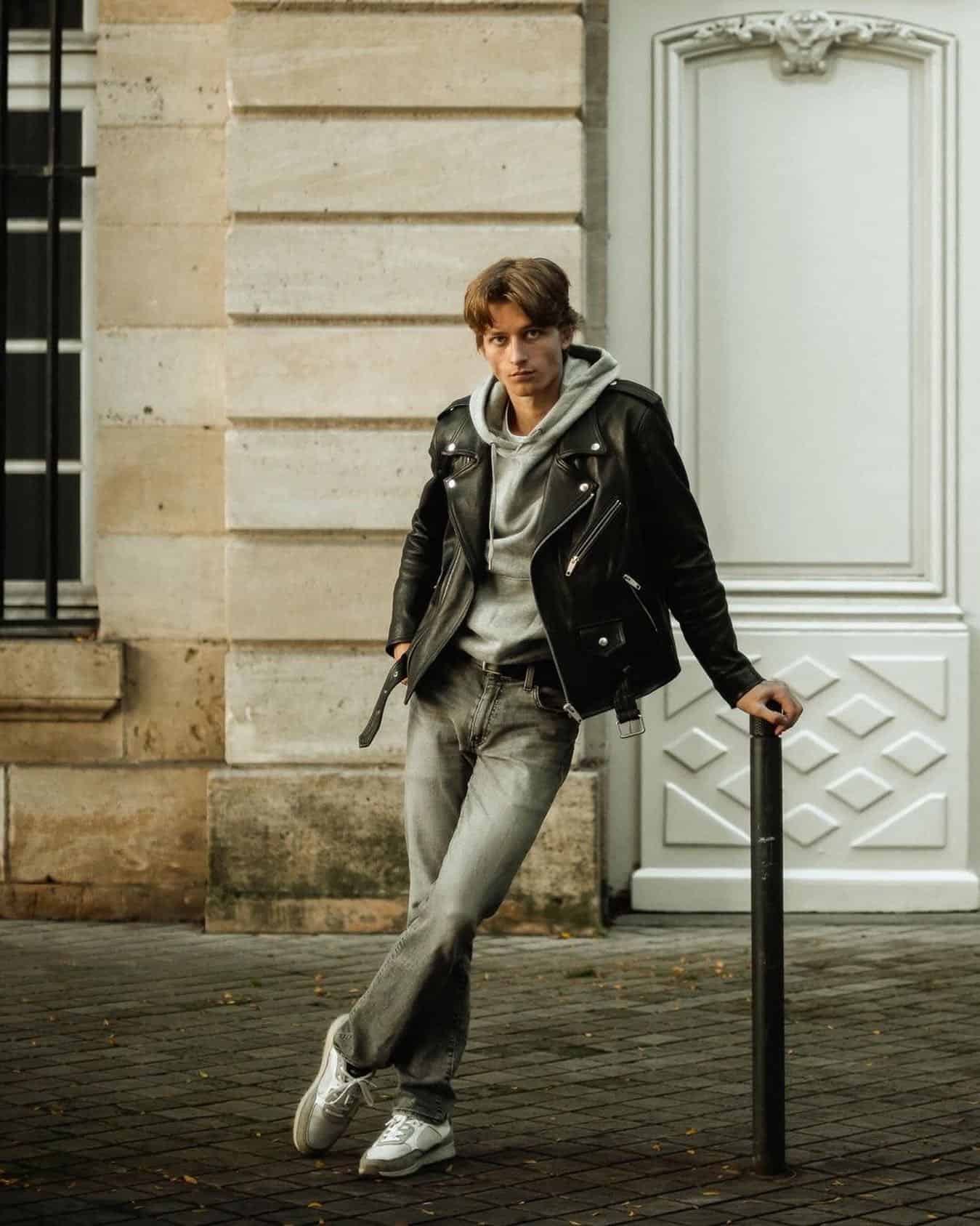
Streetwear Hairstyles & Grooming Trends
The streetwear aesthetic extends beyond clothing to hairstyles and grooming. The look favors hairstyles that reflect the effortless, individualistic ethos of streetwear, such as textured crops, buzz cuts, and undercuts. These styles are versatile, easy to maintain, and complement the casual yet edgy vibe of streetwear fashion.
In grooming, the trend leans toward a more natural and understated approach, with facial hair often kept neat and trim to balance the casual and deliberate aspects of streetwear style.
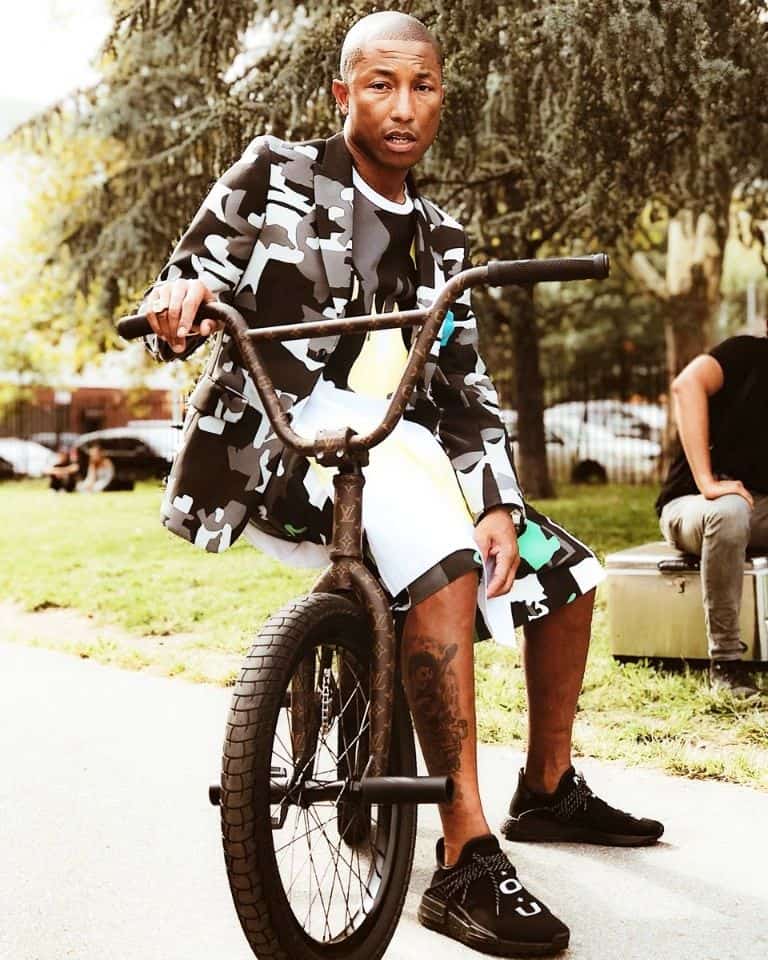
Men’s Streetwear Style Icons
Kanye West
I’m not sure if there’s a streetwear article out there that doesn’t mention Ye. Kanye West is synonymous with streetwear, merging fashion, music, and culture. His Yeezy brand has set trends in sneakers, apparel, and accessories, with each release eagerly anticipated by fans and fashion enthusiasts alike.
Pharrell Williams
Pharrell’s collaborations with brands like Adidas and his own line, Billionaire Boys Club, showcase his unique blend of streetwear with luxury and pop culture, making him a key figure in the evolution of the aesthetic.
Virgil Abloh
The late Virgil Abloh, through his work with Off-White and Louis Vuitton, bridged streetwear with high fashion. His innovative designs and conceptual pieces have left an indelible mark on the streetwear aesthetic.
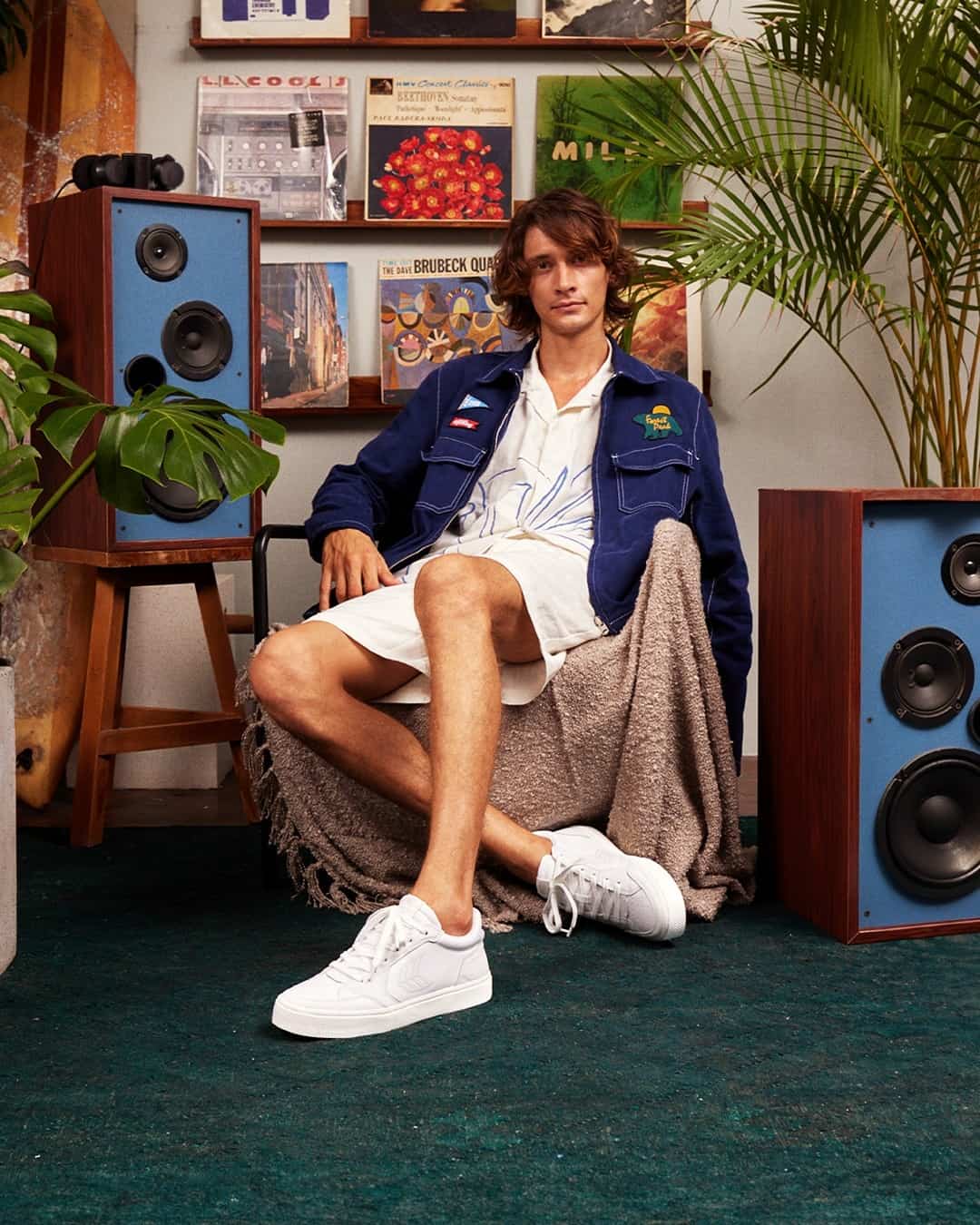
Streetwear Outfits for Men: How to Wear the Streetwear Aesthetic
Embracing the streetwear aesthetic involves mixing comfort with style, layering different textures and silhouettes, and incorporating standout pieces like bright sneakers or graphic tees.
The key is to balance bold items with understated basics, allowing each piece to contribute to a cohesive look that reflects personal style and the dynamic spirit of streetwear. All that being said, it’s about self-expression, so, most importantly, wear what you feel good in.
FAQ
-
-
Streetwear style is characterized by its roots in skate, surf, and hip-hop cultures. It focuses on comfort, functionality, and self-expression with casual yet striking pieces such as sneakers, graphic tees, and hoodies.
-
Streetwear style clothing includes a range of casual, urban-inspired apparel like hoodies, sneakers, graphic t-shirts, cargo pants, and oversized garments, often featuring bold logos and designs.
-
Streetwear is unique due to its blend of cultural influences, emphasis on community and identity, and blurring of the lines between high fashion and everyday casual wear through exclusive releases and collaborations.
-
Streetwear can be considered a luxury when it involves collaborations with high-end fashion brands, uses premium materials, and is released in limited quantities, elevating its status and desirability in the fashion industry.
-
Styling streetwear pieces involves layering different textures and silhouettes, mixing bold statement items with understated basics, and often highlighting key accessories or footwear to create a cohesive, individualistic look.
-
The best streetwear brands include established names like Supreme, Off-White, A Bathing Ape, and Stüssy, as well as innovative labels like Palace, Stone Island, and Kith, known for their unique designs, quality, and cultural impact within the streetwear community.
-

